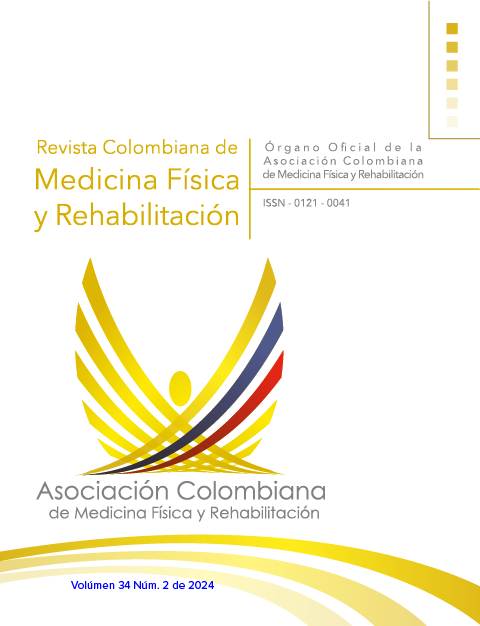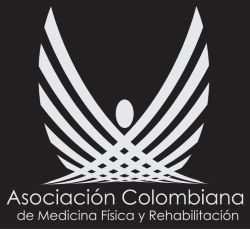Evaluation of User Experience and Functional Adequacy in Mobile Applications for Rehabilitation: Systematic
DOI:
https://doi.org/10.28957/rcmfr.440Keywords:
Mobile applications, telerehabilitation, physiotherapy, speech therapy, occupational therapyAbstract
Introduction. Mobile rehabilitation applications offer benefits such as accessibility, cost reduction, and increased patient engagement, but they face quality challenges, including unfriendly interfaces and deficient functionalities. This systematic review examines the quality of these applications in terms of Functional Suitability and User Experience.
Objective. To evaluate the compliance of mobile rehabilitation applications with the ISO/IEC 25010 standard, focusing on User Experience and Functional Suitability in areas such as physiotherapy, speech therapy, and occupational therapy.
Method. A systematic literature review following the PRISMA framework. Relevant studies from 2019 to 2023 were identified and evaluated for methodological quality using CASP and MMAT. Approved studies were analyzed to verify the compliance of the applications with the ISO 25010 standard, using a mixed-method approach combining qualitative and quantitative assessments of User Experience and Functional Suitability, supported by collaborative tools such as Rayyan, Google Sheets, and researcher consensus.
Results. The study shows that mobile rehabilitation applications do not report a high level of quality according to the criteria of the ISO/IEC 25010 standard. Slightly more than half declare compliance with functional suitability (56.9%), and only 38.2% report compliance with User Experience.
Conclusions. To improve User Experience, it is recommended to simplify interfaces, include educational content, and provide customization options. Regarding Functional Suitability, there is a need to enhance communication between patients and professionals, expand the needs covered, and update algorithms for more personalized treatments.
References
Ryan S, Ní Chasaide N, O’ Hanrahan S, Corcoran D, Caulfield B, Argent R. mHealth Apps for Musculoskeletal Rehabilitation: Systematic Search in App Stores and Content Analysis. JMIR Rehabil Assist Technol. 2022;9(3):e34355. Disponible en: https://doi.org/10.2196/34355.
Repetto C, Paolillo MP, Tuena C, Bellinzona F, Riva G. Innovative technology-based interventions in aphasia rehabilitation: a systematic review. Aphasiology. 2021;35(12):1623-46. Disponible en: https://doi.org/10.1080/02687038.2020.1819957.
Ninnis K, Van Den Berg M, Lannin NA, George S, Laver K. Information and communication technology use within occupational therapy home assessments: A scoping review. British Journal of Occupational Therapy. 2019;82(3):141-52. Disponible en: https://doi.org/10.1177/0308022618786928.
Koepp J, Baron MV, Hernandes-Martins PR, Brandenburg C, Kira ATF, Trindade VD, et al. The Quality of Mobile Apps Used for the Identification of Pressure Ulcers in Adults: Systematic Survey and Review of Apps in App Stores. JMIR MHealth UHealth. 2020;8(6):e14266. Disponible en: https://doi.org/10.2196/14266.
Maqbool B, Herold S. Potential effectiveness and efficiency issues in usability evaluation within digital health: A systematic literature review. J Syst Softw. 2024;208:111881. Disponible en: https://doi.org/10.1016/j.jss.2023.111881.
ISO 9000:2000 Sistemas de Gestión de la Calidad. Conceptos y Vocabulario. Ginebra; ISO; 2000.
ISO/IEC 25010. Calidad de software y datos. Ginebra; ISO.
CASP. Critical Appraisal Skills Programme. Oxford: CASP.
Hong QN, Pluye P, Fábregues S, Bartlett G, BoardMan F, Cargo M, et al. Mixed methods appraisal tool (MMAT) Version 2018. User guide. McGill; 2018.
Khder M. Web scraping or web crawling: State of art, techniques, approaches and application. Int. J. Advances Soft Compu. Appl. 2021;13(3):144-64. Disponible en: https://doi.org/10.15849/IJASCA.211128.11.
Guimarães NS, Ferreira AJF, Ribeiro-Silva RC, de Paula AA, Lisboa CS, Magno L, et al. Deduplicating records in systematic reviews: there are free, accurate automated ways to do so. J Clin Epidemiol. 2022;152:110-5. Disponible en: https://doi.org/10.1016/j.jclinepi.2022.10.009.
Hawley-Hague H, Tacconi C, Mellone S, Martinez E, Ford C, Chiari L, et al. Smartphone Apps to Support Falls Rehabilitation Exercise: App Development and Usability and Acceptability Study. JMIR MHealth UHealth. 2020;8(9):e15460. Disponible en: https://doi.org/10.2196/15460.
Gerber SM, Schütz N, Uslu AS, Schmidt N, Röthlisberger C, Wyss P, et al. Therapist-Guided Tablet-Based Telerehabilitation for Patients With Aphasia: Proof-of-Concept and Usability Study. JMIR Rehabil Assist Technol. 2019;6(1):e13163. Disponible en: https://doi.org/10.2196/13163.
Zhu J, Niu H, Lu D, Li Y, Ding M. Research on the applicability of an exercise rehabilitation app aiming to improve the mental and physical health of breast cancer patients in the post-operative period. Front Psychol. 2023;14:1126284. Disponible en: https://doi.org/10.3389/fpsyg.2023.1126284.
Bhattacharjya S, Cavuoto LA, Reilly B, Xu W, Subryan H, Langan J. Usability, Usefulness, and Acceptance of a Novel, Portable Rehabilitation System (mRehab) Using Smartphone and 3D Printing Technology: Mixed Methods Study. JMIR Hum Factors. 2021;8(1):e21312. Disponible en: https://doi.org/10.2196/21312.
Rodríguez-Marconi D, Morales C, Araya P, Ferrada R, Ibarra M, Catrifol MT. Uso del smartphone en telepráctica para trastornos de la voz. Una revisión desde el concepto de Mhealth. Revista Investigación en Logopedia. 2022;12(2):e78550.
Burns SP, Terblanche M, Perea J, Lillard H, DeLaPena C, Grinage N, et al. mHealth Intervention Applications for Adults Living With the Effects of Stroke: A Scoping Review. Arch Rehabil Res Clin Transl. 2021;3(1):100095. Disponible en: https://doi.org/10.1016/j.arrct.2020.100095.
Masrom M, Noor NM, Kamaruddin AI, Aziz MAA. Speech Therapy Mobile Applications for People with Aphasia: PRISMA review and features analysis. In: 2021 IEEE National Biomedical Engineering Conference (NBEC). Kuala Lumpur, Malaysia: IEEE; 2021 [citado febrero 9 de 2024]. p. 77-81. Disponible en: https://ieeexplore.ieee.org/document/9618755/.
Hughes CML, Padilla A, Hintze A, Raymundo TM, Sera M, Weidner S, et al. Developing an mHealth app for post-stroke upper limb rehabilitation: Feedback from US and Ethiopian rehabilitation clinicians. Health Informatics J. 2020;26(2):1104-17. Disponible en: https://doi.org/10.1177/1460458219868356.
Osborne CL, Juengst SB, Smith EE. Identifying user-centered content, design, and features for mobile health apps to support long-term assessment, behavioral intervention, and transitions of care in neurological rehabilitation: An exploratory study. Br J Occup Ther. 2021;84(2):101-10. Disponible en: https://doi.org/10.1177/0308022620954115.
Ahtinen A, Lehtiö A, Boberg M. Long-Term User Experience and Persuasion on 3DFysio, A Mobile Rehabilitation Application. In: Oinas-Kukkonen H, Win KT, Karapanos E, Karppinen P, Kyza E, editores. Persuasive Technology: Development of Persuasive and Behavior Change Support Systems. Cham: Springer International Publishing; 2019 [citado febrero 9 de 2024]. p. 177-88. Lecture Notes in Computer Science; vol. 11433. Disponible en: http://link.springer.com/10.1007/978-3-030-17287-9_15.
da Silva PBE, Leal AS, Ferraz NN. Usability of smartphone apps as reading aids for low vision patients. Disabil Rehabil Assist Technol. 2022;17(7):848-52. Disponible en: https://doi.org/10.1080/17483107.2020.1820086.
Bhattacharjya S, Stafford MC, Cavuoto LA, Yang Z, Song C, Subryan H, et al. Harnessing smartphone technology and three dimensional printing to create a mobile rehabilitation system, mRehab: assessment of usability and consistency in measurement. J Neuroeng Rehabil. 2019;16(1):127. Disponible en: https://doi.org/10.1186/s12984-019-0592-y.
Nordstoga AL, Bach K, Sani S, Wiratunga N, Mork PJ, Villumsen M, et al. Usability and Acceptability of an App (SELFBACK) to Support Self-Management of Low Back Pain: Mixed Methods Study. JMIR Rehabil Assist Technol. 2020;7(2):e18729. Disponible en: https://doi.org/10.2196/18729.
Bu X, Ng PH, Tong Y, Chen PQ, Fan R, Tang Q, et al. A Mobile-based Virtual Reality Speech Rehabilitation App for Patients With Aphasia After Stroke: Development and Pilot Usability Study. JMIR Serious Games. 2022;10(2):e30196. Disponible en: https://doi.org/10.2196/30196.
Parker AM, Nelliot A, Chessare CM, Malik AM, Koneru M, Hosey MM, et al. Usability and acceptability of a mobile application prototype for a combined behavioral activation and physical rehabilitation intervention in acute respiratory failure survivors. Aust Crit Care. 2020;33(6):511-7. Disponible en: https://doi.org/10.1016/j.aucc.2020.02.010.
Pedroli E, Mancuso V, Stramba-Badiale C, Cipresso P, Tuena C, Greci L, et al. Brain M-App’s Structure and Usability: A New Application for Cognitive Rehabilitation at Home. Front Hum Neurosci. 2022;16:898633. Disponible en: https://doi.org/10.3389/fnhum.2022.898633.
Pedroli E, Cipresso P, Greci L, Arlati S, Mahroo A, Mancuso V, et al. A New Application for the Motor Rehabilitation at Home: Structure and Usability of Bal-App. IEEE Trans Emerg Top Comput. 2021;9(3):1290-300. Disponible en: https://doi.org/10.1109/TETC.2020.3037962.
Fondo Nacional de Financiamiento para la Ciencia, la Tecnología y la Innovación. Contrato RC-033-2022. Modelo de tele-rehabilitación basado en la teledifusión de contenidos audiovisuales como una estrategia de fortalecimiento a la recuperación integral de pacientes en áreas rurales del municipio de san Vicente del Caguán. Bogotá D.C.: Universidad Distrital Francisco José de Caldas; 2022.
How to Cite
Downloads
Downloads
Published
Issue
Section
License
Copyright (c) 2024 Revista Colombiana de Medicina Física y Rehabilitación

This work is licensed under a Creative Commons Attribution-NonCommercial-NoDerivatives 4.0 International License.

| Article metrics | |
|---|---|
| Abstract views | |
| Galley vies | |
| PDF Views | |
| HTML views | |
| Other views | |


